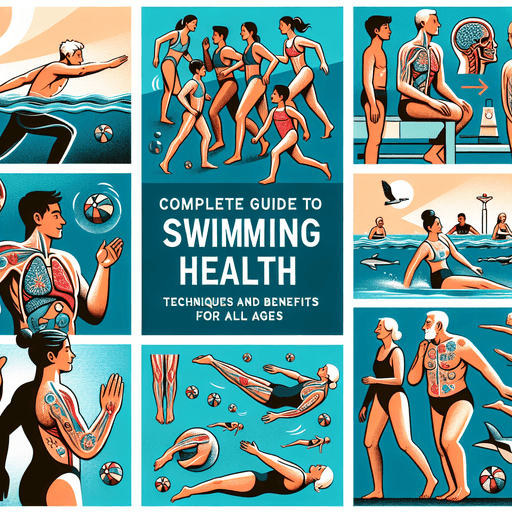Bersepeda untuk Kesehatan: Cara Memulai dan Manfaatnya bagi Tubuh
Artikel ini membahas tentang manfaat bersepeda untuk kesehatan, cara memulai, dan bagaimana aktivitas ini dapat meningkatkan kualitas hidup Anda.
More Content
Gym untuk Pemula: Panduan Lengkap untuk Memulai Perjalanan Kebugaran Anda
Artikel ini membahas tentang manfaat bersepeda untuk kesehatan, cara memulai, dan bagaimana aktivitas ini dapat meningkatkan kualitas hidup Anda.
Latihan Gym yang Efektif untuk Membentuk Tubuh Ideal
Artikel ini membahas tentang manfaat bersepeda untuk kesehatan, cara memulai, dan bagaimana aktivitas ini dapat meningkatkan kualitas hidup Anda.
Renang Sebagai Olahraga Terbaik untuk Kesehatan Jantung dan Paru-Paru
Artikel ini membahas tentang manfaat bersepeda untuk kesehatan, cara memulai, dan bagaimana aktivitas ini dapat meningkatkan kualitas hidup Anda.
Teknik Lari yang Benar untuk Mencegah Cedera dan Meningkatkan Performa
Artikel ini membahas tentang manfaat bersepeda untuk kesehatan, cara memulai, dan bagaimana aktivitas ini dapat meningkatkan kualitas hidup Anda.
Persepeda: Tips dan Trik untuk Menikmati Bersepeda dengan Aman dan Nyaman
Artikel ini membahas tentang manfaat bersepeda untuk kesehatan, cara memulai, dan bagaimana aktivitas ini dapat meningkatkan kualitas hidup Anda.
Teknik Renang yang Benar untuk Meningkatkan Kecepatan dan Daya Tahan
Artikel ini membahas tentang manfaat bersepeda untuk kesehatan, cara memulai, dan bagaimana aktivitas ini dapat meningkatkan kualitas hidup Anda.
Lari Pagi: Manfaat dan Tips untuk Meningkatkan Stamina dan Kesehatan
Artikel ini membahas tentang manfaat bersepeda untuk kesehatan, cara memulai, dan bagaimana aktivitas ini dapat meningkatkan kualitas hidup Anda.
Renang Sebagai Olahraga Terbaik untuk Kesehatan Jantung dan Mental
Artikel ini membahas tentang manfaat bersepeda untuk kesehatan, cara memulai, dan bagaimana aktivitas ini dapat meningkatkan kualitas hidup Anda.
Sepeda Santai: Manfaat Bersepeda untuk Kesehatan dan Lingkungan
Artikel ini membahas tentang manfaat bersepeda untuk kesehatan, cara memulai, dan bagaimana aktivitas ini dapat meningkatkan kualitas hidup Anda.
Yoga Setiap Hari: Transformasi Kesehatan Mental dan Fisik Anda
Artikel ini membahas tentang manfaat bersepeda untuk kesehatan, cara memulai, dan bagaimana aktivitas ini dapat meningkatkan kualitas hidup Anda.
Panduan Lengkap Yoga untuk Meningkatkan Fleksibilitas dan Keseimbangan Tubuh
Artikel ini membahas tentang manfaat bersepeda untuk kesehatan, cara memulai, dan bagaimana aktivitas ini dapat meningkatkan kualitas hidup Anda.
Sepeda Santai atau Intensif? Pilih yang Tepat untuk Kesehatan Anda
Artikel ini membahas tentang manfaat bersepeda untuk kesehatan, cara memulai, dan bagaimana aktivitas ini dapat meningkatkan kualitas hidup Anda.
Yoga untuk Pemula: 5 Pose Dasar yang Bisa Dilakukan di Rumah
Artikel ini membahas tentang manfaat bersepeda untuk kesehatan, cara memulai, dan bagaimana aktivitas ini dapat meningkatkan kualitas hidup Anda.
Teknik Pernapasan dalam Renang untuk Meningkatkan Performa dan Kesehatan
Artikel ini membahas tentang manfaat bersepeda untuk kesehatan, cara memulai, dan bagaimana aktivitas ini dapat meningkatkan kualitas hidup Anda.
Yoga untuk Pemula: Posisi Dasar yang Mudah Dilakukan di Rumah
Artikel ini membahas tentang manfaat bersepeda untuk kesehatan, cara memulai, dan bagaimana aktivitas ini dapat meningkatkan kualitas hidup Anda.
Manfaat Lari Pagi untuk Kesehatan Mental dan Fisik
Artikel ini membahas tentang manfaat bersepeda untuk kesehatan, cara memulai, dan bagaimana aktivitas ini dapat meningkatkan kualitas hidup Anda.
10 Manfaat Kesehatan dari Buah-Buahan yang Harus Anda Ketahui
Artikel ini membahas tentang manfaat bersepeda untuk kesehatan, cara memulai, dan bagaimana aktivitas ini dapat meningkatkan kualitas hidup Anda.
Yoga Setiap Hari: Bagaimana Praktek Ini Dapat Mengubah Hidup Anda
Artikel ini membahas tentang manfaat bersepeda untuk kesehatan, cara memulai, dan bagaimana aktivitas ini dapat meningkatkan kualitas hidup Anda.
Yoga di Pagi Hari: Cara Mudah Meningkatkan Fleksibilitas dan Ketenangan Pikiran
Artikel ini membahas tentang manfaat bersepeda untuk kesehatan, cara memulai, dan bagaimana aktivitas ini dapat meningkatkan kualitas hidup Anda.
Lari Pagi vs Lari Malam: Mana yang Lebih Baik untuk Kesehatan?
Artikel ini membahas tentang manfaat bersepeda untuk kesehatan, cara memulai, dan bagaimana aktivitas ini dapat meningkatkan kualitas hidup Anda.
Teknik Pernapasan dalam Renang untuk Meningkatkan Stamina dan Performa
Artikel ini membahas tentang manfaat bersepeda untuk kesehatan, cara memulai, dan bagaimana aktivitas ini dapat meningkatkan kualitas hidup Anda.
Buah-Buahan Superfood yang Wajib Dikonsumsi untuk Diet Sehat
Artikel ini membahas tentang manfaat bersepeda untuk kesehatan, cara memulai, dan bagaimana aktivitas ini dapat meningkatkan kualitas hidup Anda.
Buah-Buahan Superfood yang Wajib Ada dalam Diet Harian Anda
Artikel ini membahas tentang manfaat bersepeda untuk kesehatan, cara memulai, dan bagaimana aktivitas ini dapat meningkatkan kualitas hidup Anda.
Buah-Buahan Superfood yang Wajib Dikonsumsi untuk Meningkatkan Imunitas
Artikel ini membahas tentang manfaat bersepeda untuk kesehatan, cara memulai, dan bagaimana aktivitas ini dapat meningkatkan kualitas hidup Anda.
Yoga untuk Pemula: Posisi Dasar yang Harus Anda Kuasai
Artikel ini membahas tentang manfaat bersepeda untuk kesehatan, cara memulai, dan bagaimana aktivitas ini dapat meningkatkan kualitas hidup Anda.
Gym untuk Pemula: Panduan Lengkap Memulai Latihan Kekuatan
Artikel ini membahas tentang manfaat bersepeda untuk kesehatan, cara memulai, dan bagaimana aktivitas ini dapat meningkatkan kualitas hidup Anda.
Teknik Renang yang Benar untuk Mencegah Cedera dan Meningkatkan Performa
Artikel ini membahas tentang manfaat bersepeda untuk kesehatan, cara memulai, dan bagaimana aktivitas ini dapat meningkatkan kualitas hidup Anda.
Program Latihan Gym 30 Hari untuk Membentuk Tubuh Ideal
Artikel ini membahas tentang manfaat bersepeda untuk kesehatan, cara memulai, dan bagaimana aktivitas ini dapat meningkatkan kualitas hidup Anda.
10 Manfaat Kesehatan dari Buah-Buahan yang Harus Anda Ketahui
Artikel ini membahas tentang manfaat bersepeda untuk kesehatan, cara memulai, dan bagaimana aktivitas ini dapat meningkatkan kualitas hidup Anda.
Program Latihan Gym 12 Minggu untuk Membentuk Tubuh Ideal
Artikel ini membahas tentang manfaat bersepeda untuk kesehatan, cara memulai, dan bagaimana aktivitas ini dapat meningkatkan kualitas hidup Anda.
10 Manfaat Buah-Buahan untuk Kesehatan Tubuh yang Harus Anda Ketahui
Artikel ini membahas tentang manfaat bersepeda untuk kesehatan, cara memulai, dan bagaimana aktivitas ini dapat meningkatkan kualitas hidup Anda.
10 Manfaat Buah-Buahan untuk Kesehatan Tubuh yang Harus Anda Ketahui
Artikel ini membahas tentang manfaat bersepeda untuk kesehatan, cara memulai, dan bagaimana aktivitas ini dapat meningkatkan kualitas hidup Anda.
Lari Pagi: Cara Mudah Meningkatkan Stamina dan Kesehatan Jantung
Artikel ini membahas tentang manfaat bersepeda untuk kesehatan, cara memulai, dan bagaimana aktivitas ini dapat meningkatkan kualitas hidup Anda.
Buah-Buahan Tropis yang Kaya Vitamin dan Mineral untuk Daya Tahan Tubuh
Artikel ini membahas tentang manfaat bersepeda untuk kesehatan, cara memulai, dan bagaimana aktivitas ini dapat meningkatkan kualitas hidup Anda.
Tips Lari Pagi untuk Pemula: Mulai dengan Langkah Kecil
Artikel ini membahas tentang manfaat bersepeda untuk kesehatan, cara memulai, dan bagaimana aktivitas ini dapat meningkatkan kualitas hidup Anda.
Panduan Lengkap Persepeda untuk Meningkatkan Kesehatan Jantung dan Paru-Paru
Artikel ini membahas tentang manfaat bersepeda untuk kesehatan, cara memulai, dan bagaimana aktivitas ini dapat meningkatkan kualitas hidup Anda.
Bersepeda ke Kantor: Solusi Sehat dan Ramah Lingkungan untuk Aktivitas Sehari-hari
Artikel ini membahas tentang manfaat bersepeda untuk kesehatan, cara memulai, dan bagaimana aktivitas ini dapat meningkatkan kualitas hidup Anda.
Buah-Buahan Superfood yang Wajib Dikonsumsi untuk Meningkatkan Imunitas
Artikel ini membahas tentang manfaat bersepeda untuk kesehatan, cara memulai, dan bagaimana aktivitas ini dapat meningkatkan kualitas hidup Anda.
Bagaimana Gym Dapat Meningkatkan Kualitas Tidur Anda?
Artikel ini membahas tentang manfaat bersepeda untuk kesehatan, cara memulai, dan bagaimana aktivitas ini dapat meningkatkan kualitas hidup Anda.
Sepeda Santai atau Intensif? Temukan Jenis Bersepeda yang Cocok untuk Anda
Artikel ini membahas tentang manfaat bersepeda untuk kesehatan, cara memulai, dan bagaimana aktivitas ini dapat meningkatkan kualitas hidup Anda.
10 Manfaat Kesehatan dari Buah-Buahan yang Harus Anda Ketahui
Artikel ini membahas tentang manfaat bersepeda untuk kesehatan, cara memulai, dan bagaimana aktivitas ini dapat meningkatkan kualitas hidup Anda.
10 Manfaat Buah-Buahan untuk Kesehatan Tubuh yang Harus Anda Ketahui
Artikel ini membahas tentang manfaat bersepeda untuk kesehatan, cara memulai, dan bagaimana aktivitas ini dapat meningkatkan kualitas hidup Anda.
Strategi Lari Jarak Jauh: Tips dan Trik untuk Pemula
Artikel ini membahas tentang manfaat bersepeda untuk kesehatan, cara memulai, dan bagaimana aktivitas ini dapat meningkatkan kualitas hidup Anda.
Bersepeda untuk Kesehatan: Bagaimana Memulai dan Manfaatnya bagi Tubuh
Artikel ini membahas tentang manfaat bersepeda untuk kesehatan, cara memulai, dan bagaimana aktivitas ini dapat meningkatkan kualitas hidup Anda.
5 Latihan Gym Efektif untuk Membentuk Otot Dada yang Kuat dan Berdefinisi
Artikel ini membahas tentang manfaat bersepeda untuk kesehatan, cara memulai, dan bagaimana aktivitas ini dapat meningkatkan kualitas hidup Anda.
Teknik Lari yang Benar untuk Mencegah Cedera dan Meningkatkan Performa
Artikel ini membahas tentang manfaat bersepeda untuk kesehatan, cara memulai, dan bagaimana aktivitas ini dapat meningkatkan kualitas hidup Anda.
Yoga untuk Pemula: 5 Pose Dasar yang Bisa Dilakukan di Rumah
Artikel ini membahas tentang manfaat bersepeda untuk kesehatan, cara memulai, dan bagaimana aktivitas ini dapat meningkatkan kualitas hidup Anda.
Gym untuk Pemula: Panduan Lengkap Memulai Latihan Kekuatan
Artikel ini membahas tentang manfaat bersepeda untuk kesehatan, cara memulai, dan bagaimana aktivitas ini dapat meningkatkan kualitas hidup Anda.
Sepeda Santai vs. Sepeda Gunung: Mana yang Lebih Baik untuk Kesehatan?
Artikel ini membahas tentang manfaat bersepeda untuk kesehatan, cara memulai, dan bagaimana aktivitas ini dapat meningkatkan kualitas hidup Anda.
Renang Sebagai Olahraga Terbaik untuk Kesehatan Jantung dan Paru-Paru
Artikel ini membahas tentang manfaat bersepeda untuk kesehatan, cara memulai, dan bagaimana aktivitas ini dapat meningkatkan kualitas hidup Anda.
Panduan Lengkap Memilih Gym yang Tepat untuk Tujuan Kesehatan Anda
Artikel ini membahas tentang manfaat bersepeda untuk kesehatan, cara memulai, dan bagaimana aktivitas ini dapat meningkatkan kualitas hidup Anda.
Kulit Sehat dan Berkilaunya Rahasia Buah untuk Para Pecinta Sepeda
Artikel ini membahas tentang manfaat bersepeda untuk kesehatan, cara memulai, dan bagaimana aktivitas ini dapat meningkatkan kualitas hidup Anda.
Cara Efektif Menggabungkan Renang dan Lari dalam Rutinitas Harian
Artikel ini membahas tentang manfaat bersepeda untuk kesehatan, cara memulai, dan bagaimana aktivitas ini dapat meningkatkan kualitas hidup Anda.
Panduan Nutrisi: Kombinasi Buah-Buahan untuk Meningkatkan Performa Latihan Fitness Anda
Artikel ini membahas tentang manfaat bersepeda untuk kesehatan, cara memulai, dan bagaimana aktivitas ini dapat meningkatkan kualitas hidup Anda.
Manfaat Mengonsumsi Buah-Buahan untuk Kesehatan dan Kebugaran Anda
Artikel ini membahas tentang manfaat bersepeda untuk kesehatan, cara memulai, dan bagaimana aktivitas ini dapat meningkatkan kualitas hidup Anda.
Mengoptimalkan Latihan Gym Anda dengan Pola Makan Sehat Berbasis Buah
Artikel ini membahas tentang manfaat bersepeda untuk kesehatan, cara memulai, dan bagaimana aktivitas ini dapat meningkatkan kualitas hidup Anda.
Inilah 10 Buah Terbaik yang Bisa Meningkatkan Kebugaran Fisik Anda
Artikel ini membahas tentang manfaat bersepeda untuk kesehatan, cara memulai, dan bagaimana aktivitas ini dapat meningkatkan kualitas hidup Anda.
Teknik Renang yang Bisa Tingkatkan Kesehatan Jantung Anda
Artikel ini membahas tentang manfaat bersepeda untuk kesehatan, cara memulai, dan bagaimana aktivitas ini dapat meningkatkan kualitas hidup Anda.
Panduan Lari untuk Pemula: Mulai dari Nol hingga Menjadi Pelari Handal
Artikel ini membahas tentang manfaat bersepeda untuk kesehatan, cara memulai, dan bagaimana aktivitas ini dapat meningkatkan kualitas hidup Anda.
Manfaat Yoga untuk Kesehatan Mental: Relaksasi dan Pengelolaan Stres
Artikel ini membahas tentang manfaat bersepeda untuk kesehatan, cara memulai, dan bagaimana aktivitas ini dapat meningkatkan kualitas hidup Anda.
Manfaat Sehat dari Lari Ringan: Panduan bagi Pemula untuk Mencapai Kebugaran
Artikel ini membahas tentang manfaat bersepeda untuk kesehatan, cara memulai, dan bagaimana aktivitas ini dapat meningkatkan kualitas hidup Anda.
Manfaat Olahraga Renang untuk Kesehatan Jantung dan Tubuh
Artikel ini membahas tentang manfaat bersepeda untuk kesehatan, cara memulai, dan bagaimana aktivitas ini dapat meningkatkan kualitas hidup Anda.
Cara Membuat Smoothie Buah yang Cocok untuk Pemanasan dan Pendinginan Pasca-Lari
Artikel ini membahas tentang manfaat bersepeda untuk kesehatan, cara memulai, dan bagaimana aktivitas ini dapat meningkatkan kualitas hidup Anda.
Manfaat Renang dan Lari untuk Kebugaran Jantung Anda
Artikel ini membahas tentang manfaat bersepeda untuk kesehatan, cara memulai, dan bagaimana aktivitas ini dapat meningkatkan kualitas hidup Anda.
Panduan Lengkap untuk Memulai Gaya Hidup Sehat dengan Manfaat Renang
Artikel ini membahas tentang manfaat bersepeda untuk kesehatan, cara memulai, dan bagaimana aktivitas ini dapat meningkatkan kualitas hidup Anda.
Panduan Memulai Fitness: Kombinasi Gym dan Makanan Sehat
Artikel ini membahas tentang manfaat bersepeda untuk kesehatan, cara memulai, dan bagaimana aktivitas ini dapat meningkatkan kualitas hidup Anda.
Tips Nutrisi: Bagaimana Buah-buahan Dapat Meningkatkan Kinerja Anda di Gym
Artikel ini membahas tentang manfaat bersepeda untuk kesehatan, cara memulai, dan bagaimana aktivitas ini dapat meningkatkan kualitas hidup Anda.
Menjadi Ahli SEO di Bidang Renang: Panduan untuk Pemula
Artikel ini membahas tentang manfaat bersepeda untuk kesehatan, cara memulai, dan bagaimana aktivitas ini dapat meningkatkan kualitas hidup Anda.
Pedal ke Masa Depan: Tren Sehat Bersepeda di Perkotaan dan Tips Menjaga Konsistensi
Artikel ini membahas tentang manfaat bersepeda untuk kesehatan, cara memulai, dan bagaimana aktivitas ini dapat meningkatkan kualitas hidup Anda.
Kekuatan Sepeda: Keuntungan Olahraga Bersepeda untuk Tubuh dan Pikiran
Artikel ini membahas tentang manfaat bersepeda untuk kesehatan, cara memulai, dan bagaimana aktivitas ini dapat meningkatkan kualitas hidup Anda.
Rangkaian Yoga Pagi untuk Menjaga Kesehatan Fisik dan Mental
Artikel ini membahas tentang manfaat bersepeda untuk kesehatan, cara memulai, dan bagaimana aktivitas ini dapat meningkatkan kualitas hidup Anda.
Panduan Lengkap Kesehatan Renang: Teknik dan Manfaat untuk Setiap Usia
Artikel ini membahas tentang manfaat bersepeda untuk kesehatan, cara memulai, dan bagaimana aktivitas ini dapat meningkatkan kualitas hidup Anda.
Renang untuk Kesehatan: Mengapa Ini Olahraga Ideal untuk Segala Usia
Artikel ini membahas tentang manfaat bersepeda untuk kesehatan, cara memulai, dan bagaimana aktivitas ini dapat meningkatkan kualitas hidup Anda.
Peran Buah-Buahan dalam Diet Sehat untuk Penggemar Lari
Artikel ini membahas tentang manfaat bersepeda untuk kesehatan, cara memulai, dan bagaimana aktivitas ini dapat meningkatkan kualitas hidup Anda.
Yoga vs. Renang: Pilihan Terbaik untuk Kesehatan Tubuh dan Jiwa
Artikel ini membahas tentang manfaat bersepeda untuk kesehatan, cara memulai, dan bagaimana aktivitas ini dapat meningkatkan kualitas hidup Anda.
Alasan Kenapa Berenang Adalah Latihan Kardio Terbaik yang Anda Butuhkan
Artikel ini membahas tentang manfaat bersepeda untuk kesehatan, cara memulai, dan bagaimana aktivitas ini dapat meningkatkan kualitas hidup Anda.
Menjaga Kebugaran dan Kesehatan dengan Olahraga Berenang yang Menyenangkan
Artikel ini membahas tentang manfaat bersepeda untuk kesehatan, cara memulai, dan bagaimana aktivitas ini dapat meningkatkan kualitas hidup Anda.











































